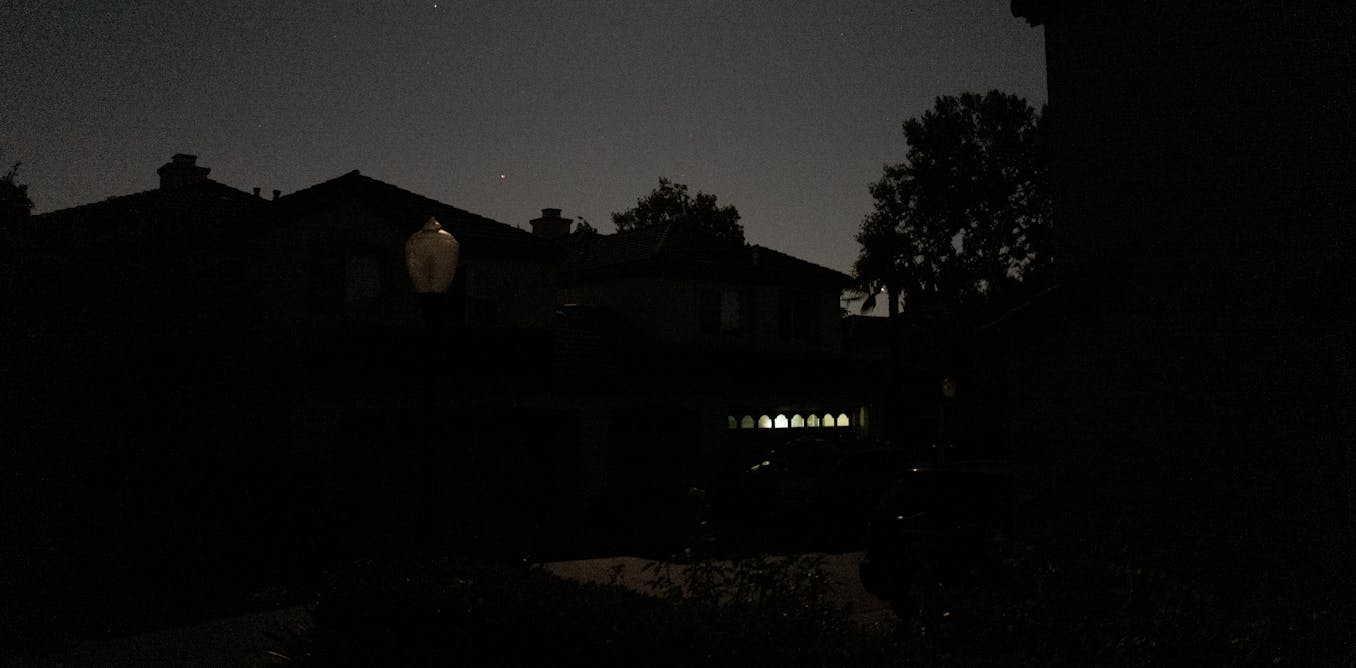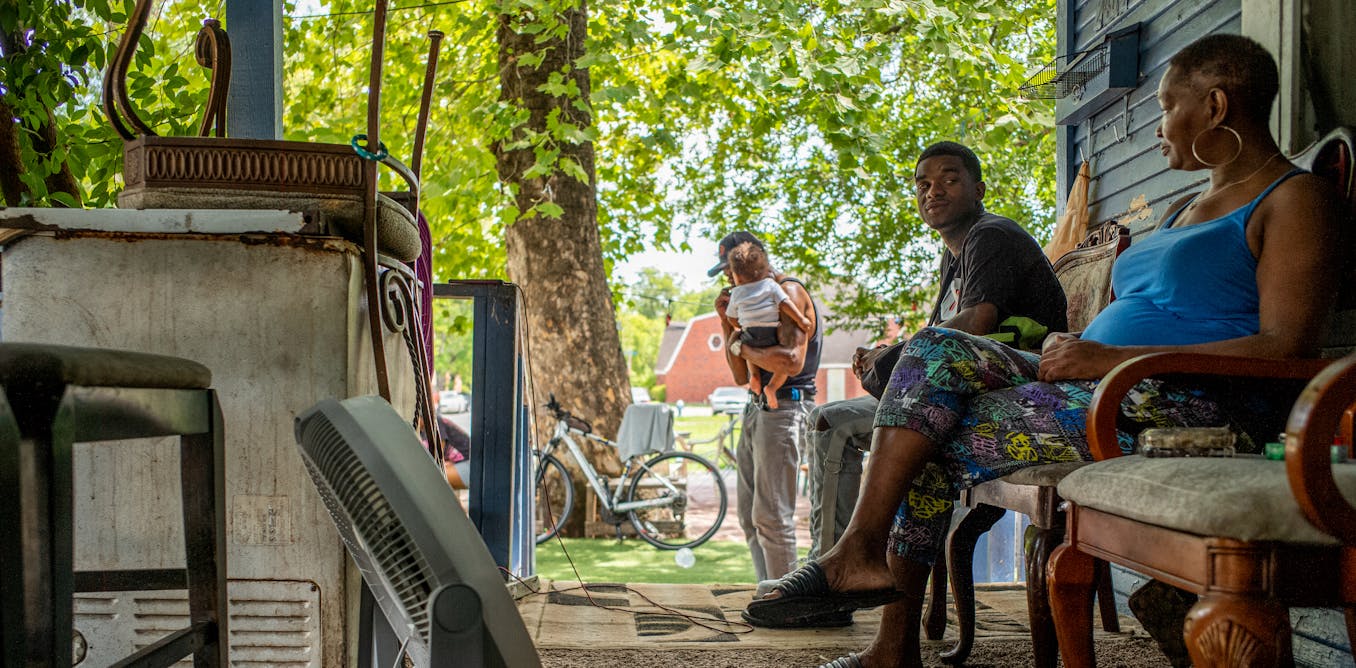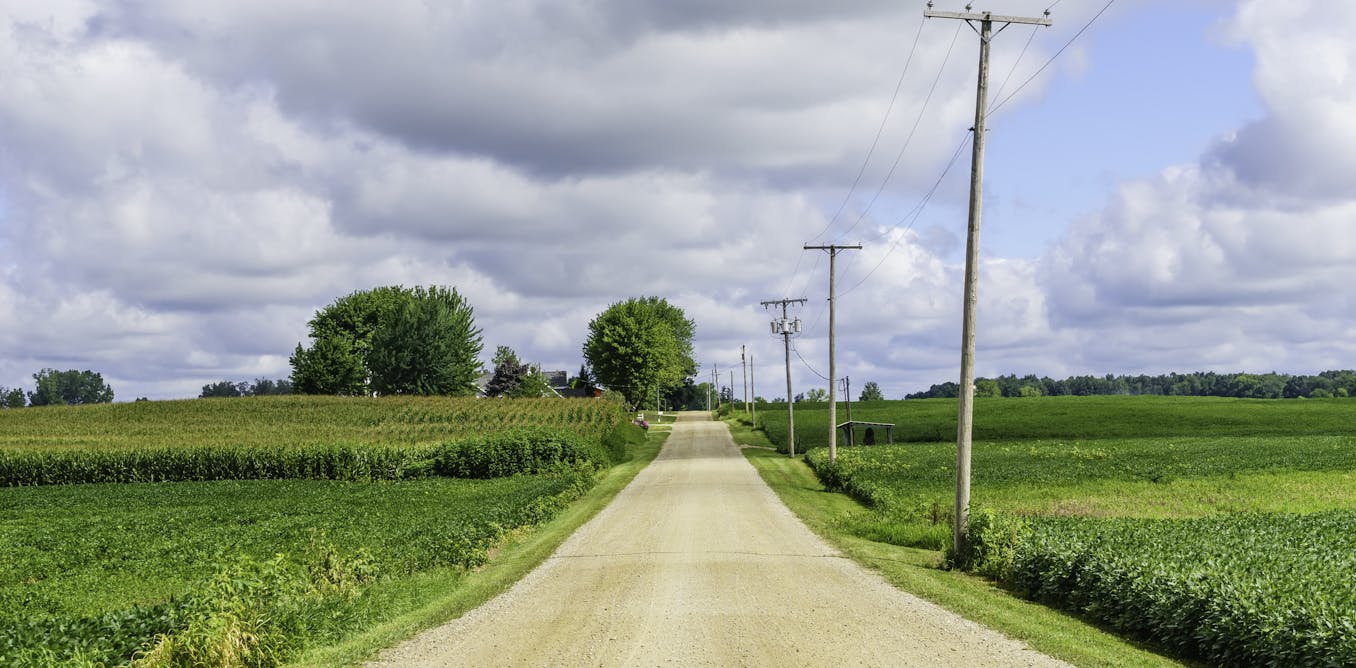Are you prepared for when the power goes out? To prevent massive wildfires in drought-prone, high-wind areas, electrical companies have begun preemptively shutting off electricity. These planned shutdowns are called public safety power shutoffs, abbreviated to PSPS, and they’re increasingly common. So far this year, we’ve seen them in Texas, New Mexico and California.
Unlike regular power failures, which on average last only about two hours while a piece of broken equipment is repaired, a PSPS lasts until weather conditions improve, which could be days. And these shutoffs come at a steep price. In 2010 alone, they cost California over US$13 billion. A 2019 analysis of shutoffs in Placer County, California, found that they harmed 70% of local businesses.
I am a business school professor who studies how people pay for things, including during emergencies. As I point out in my new book “The Power of Cash: Why Using Paper Money is Good for You and Society,” many people have abandoned paper money and switched to electronic payments such as credit cards and mobile apps. This can become a big problem during an emergency, since these systems need electricity to operate. The switch to electronic payments is making the world less resilient in the face of increasing numbers of major natural disasters.
Smith Collection/Gado/Getty Images
So if a public safety power shutoff strikes and you don’t have any cash, you may be doubly vulnerable. On the other hand, keeping cash can protect you – and not just you and your family, but also local businesses and your community. After all, keeping the economy moving during shutoffs reduces the financial damage they cause.
Why do they keep turning off the power, anyway?
It’s all about risk.
The world has experienced a number of very destructive wildfires recently. In 2025, large parts of Los Angeles burned to the ground, with over 18,000 buildings destroyed or damaged. In 2023, wildfires in Hawaii killed over 100 people. Massive wildfires have also occurred recently in South Korea, Portugal and Australia.
Governments, people whose houses burned and insurance companies are all looking for someone to blame and pay for the damage. Climate change, which is increasing the world’s average temperatures and drying out trees and grass, is setting the conditions. Since Mother Nature cannot be sued, utilities make handy scapegoats with deep pockets. Electrical utilities are sued because their power lines, transformers and other equipment often start blazes.
So to prevent lawsuits as well as fires, power companies are increasingly turning off the power when the conditions are ripe for a catastrophic blaze. There’s no uniform set of standards for when to impose a shutdown, but in general, power companies do it when there are hot, dry and windy conditions. For example, a PSPS is triggered in Hawaii if there’s a drought, wind gusts are over 45 miles per hour and relative humidity is under 45%.
Power shutoffs are a relatively new idea. They were proposed in California in 2008 and first allowed in 2012.
Since then, power companies across the entire western U.S. from Texas to Hawaii have adopted these plans. Shutoff plans also stretch from southern border states such as Arizona to northern border states such as Idaho and Montana.
Shutting off the power is a huge problem, since it causes massive disruption to communities. People depend on power to run medical equipment, work and keep communities safe. Even people with a desperate need for electricity, such as those on medical life support, are not immune to a safety shutoff.
How to prepare for a PSPS
As the world warms, the chance of being caught in a preemptive power shutoff increases. What can you do to minimize the impact?
Having solar panels won’t protect you: Utilities shut off customers with solar panels to block those panels from pushing power onto the grid, since the whole goal is to shut off the grid. The only way for you to still have power is to buy a battery storage system and a transfer switch, which allows you to take your system completely off the grid. But this is very expensive.
Getting a portable generator is only a partial solution for a multiday shutoff, since most last only six to 18 hours on a single tank of gas. Plus, generators run very hot, which creates its own fire risk.
Another way to minimize the impact of both a power shutoff and a wildfire is to create a small disaster relief kit, or “go bag.” Creating one is relatively inexpensive. It should contain key items such as water, your medicines, some shelf-stable food – and importantly, some cash. Even some government websites forget to mention this.
It’s also important to use paper money before a shutoff happens. I have all too frequently seen gas station attendants, supermarket checkout clerks and restaurant servers have no idea how to handle cash.
Recently at my local supermarket, for example, I paid with a $20 bill. The cashier had to ask another employee which kinds of coins to use to make change. If people don’t know how to handle cash during normal times, it ceases to be useful during emergencies.
As the world warms, public safety power shutoffs will occur more frequently. The shutoffs clearly highlight the trade-off between economic and social disruption versus preventing dangerous wildfires. These shutoffs show there are no easy solutions – only hard choices.
There are a few sensible and easy steps to take to reduce the impact of these shutoffs. One is to understand that during one of the very moments you might really need to spend money, modern payment systems fail. Holding and frequently using old-fashioned cash is a simple and low-cost way to protect yourself and your family.




